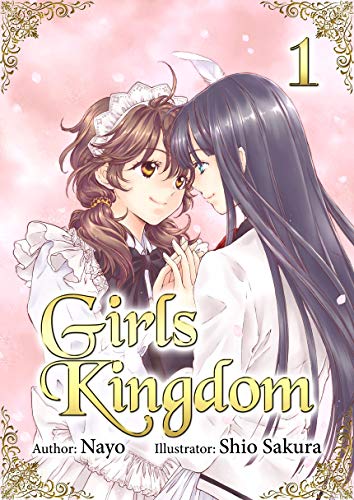By Nayo and Shio Sakura. Released in Japan by GL Bunko. Released in North America by J-Novel Club. Translated by Philip Reuben.
Because a series such as Girls Kingdom revels in its cliches, it’s not a great surprise that everything that happens in it seems to revolve around Misaki. She has Big Protagonist Energy, and thus is able to be part of events that might otherwise have gone on without her input, or, in other cases, able to accidentally wander into areas that she absolutely has no right to be in. Not to spoil too much, but there is a supernatural barrier in the forest that Misaki just blithely walks past, and the explanation that we get is something akin to “huh, well, she’s just that sort”. Speaking of supernatural barriers, after the reveal in the 3rd book, I was expecting a bit more of that sort of thing, and yet for 3/4 of this book we are once again dealing with Maria-sama Ga Miteru-style school politics and social miscues. Fortunately, when we DO get what we wanted all along, it’s possibly the best part of the book… not because it’s dramatic or action-packed, but more because it’s absolutely hilarious. This series really can go anywhere.
We pick up where we left off last time. Sakura is newly arrived at the school, and the salons are fighting to see who she joins up with. Will it be the Sky Salon, who not only offer business opportunities but also our heroine’s Big Protagonist Energy? Will it be the Paradise Palace, where she can be among other very short young ladies and eat the tastiest sweets in the world? Or perhaps the Gloriana Guesthouse, the British-themed dark horse? It certainly won’t be the Mauve Manor, and relations between Shion and Himeko seem, if anything, worse than ever. After this, we focus on Saeko, the Sky Salon’s “Number Two”, and her seemingly sadistic relationship with her Seraph, Matsuri. Matsuri has now paid off her debt, meaning she does not have to be Saeko’s Seraph anymore. Most would assume that they could thus enter a more natural Mistress and Seraph relationship, but they reckon without Saeko’s stubbornness and Matsuri’s melancholy.
As readers will no doubt note, I left out Angelica from this description. She shows up here and there, and does indeed have a plotline near the end of the book, but I’ll avoid that for now, as it’s better read unspoiled. As for the rest, it was pretty good. The second half was better than the first, and not just because of Angelica. Much as the author did their best to stir up doubt about who Sakura would choose, and how everyone was very close in the end… from a dramatic standpoint, it’s not particularly a surprise. Saeko and Matsuri is more interesting, especially because if everyone finds out about it the whole school is in danger of a Yellow Rose Revolution. It also reflects back on Misaki and Himeko, as Misaki realizes that her own arrangement with her Mistress is not so easily broken. It doesn’t help that Misaki is currently taking baths with Himeko, sleeping with Himeko, being constantly touched by Himeko, and thinking “this must be what Mistresses and Seraphs do”. She’d get along well with Otherside Picnic’s Sorawo.
The book ends with a cliffhanger, and possibly a field trip, but we’re going to have to wait – we’ve caught up with the Japanese releases. Till then, if you enjoy your yuri tongue-in-cheek and can’t get the Maria-sama novels licensed, this will do nicely to tide you over.



